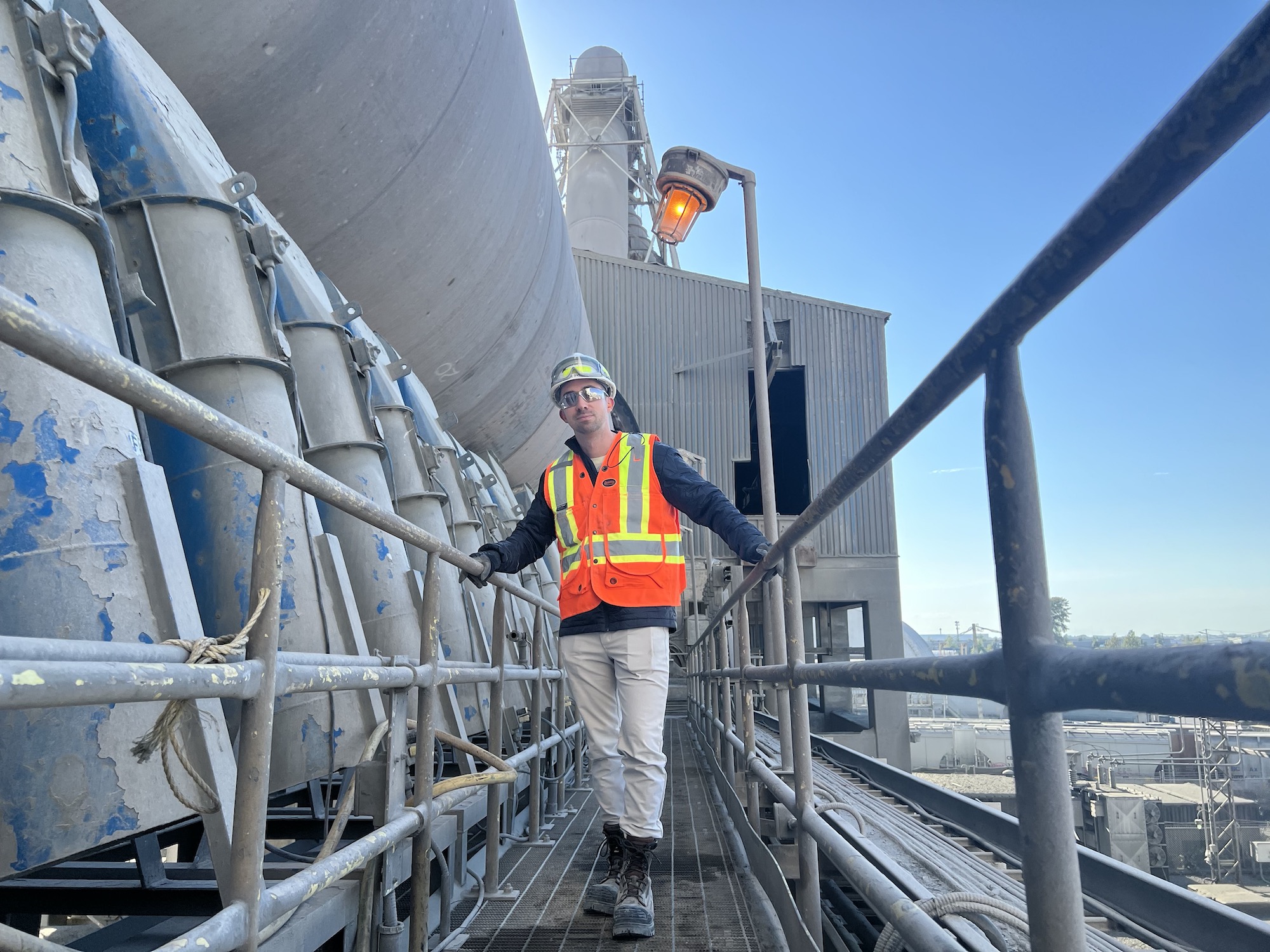
Rock to Road magazine celebrates 10 of the aggregates and roadbuilding industry’s young professionals rising up the ranks in their respective positions.
Editor Andrew Snook had the opportunity to sit down and chat with all of the winners about what attracted them to the industry, their favourite projects, career advice for young people entering the industry.
Here is the ninth of 10 that we are featuring online this month.
JOSEPH GVILDYS
Cement Industrial Director Lafarge Canada Exshaw, Alta.
While studying chemical engineering at Queen’s University in Kingston, Ont., Joseph Gvildys noticed a position for engineer-in-training at a nearby cement plant in Picton, Ont. He applied for the role and was selected, opening his eyes to the world of building materials.
“I started my career at a cement manufacturing plant, and I got exposure to the entire building materials industry for about four years there. I enjoyed it and I ended up staying in this industry,” Joseph says.
When Joseph joined Lafarge in 2011 as a process and quality engineer, he applied his process engineering knowledge to resolve a major bottleneck in production. Later, while managing the lab in Exshaw, Alta., Joseph focused on accuracy and performance and ensured top quality cement was supplied for Canada’s longest new runway at the Calgary airport.
Currently, Joseph oversees all cement and slag manufacturing for Lafarge in Western Canada and the Pacific Northwest U.S. With a team of 350 people reporting to Joseph, he drives capital allocation, performance, project management, and strategy across two cement manufacturing plants and two slag grinding facilities.
“Joseph has made notable achievements across diverse technical and leadership roles in cement manufacturing,” says Emilia Salamon, human resources coordinator for Lafarge Canada.
He is currently driving construction of a low carbon fuel system at the Lafarge Exshaw Cement Plant in Exshaw, Alta., to replace 35 per cent of the plant’s energy needs with low carbon fuels, while at the same time diverting construction waste away from landfills and lowering the carbon footprint of cement.
“Joseph is quick to embrace new technologies to advance the digitalization of operations to improve efficiencies and customer service,” Emilia says. “His current focus is on digitalizing the safety and preventive maintenance program of the cement manufacturing facilities.”
His favourite aspect of his work is the variety of projects he’s involved in.
“My focus has been manufacturing and distribution up until this point. But the company that I’ve worked for specifically, Lafarge Canada, for the last 11 years, we basically do it all,” he says. “I’ve been able to be exposed to many different parts of our industry. By being part of this large organization, it’s pretty exciting for an engineer, especially a new engineer, because you have a lot of freedom to make improvements.”
Joseph says trying to make improvements is encouraged throughout the company.
“We want people coming in, being creative and trying things, and you know, sometimes failing, but hopefully not all the time,” he says. “In our industry, we’re pretty flexible. We’re pretty adaptable, which I think is pretty cool.”
Joseph’s passions intersect at manufacturing and sustainability.
“He believes sustainability and profitability go hand and hand. A pilot carbon capture technology has been operating for a year at the Lafarge Richmond facility and Joseph is part of a team identifying creative uses for the captured CO2,” Emilia says.
His leadership through change was demonstrated in his response during the COVID-19 coronavirus pandemic.
“Quickly changing the model of the cement terminals to full contactless operation and cement loading ensured no supply interruption to the Lafarge operations, which helped ensure his team members kept their jobs, and kept product delivered to customers on time,” Emilia says.
Joseph says the biggest challenge in the industry today is finding qualified people.
“I think that it’s other industries as well, especially it today’s climate, but it’s been a struggle for us. We’ve noticed a big increase in vacancies that are taking us much longer to fill. That’s something that I’m putting a lot of time into. I’m spending 30 per cent of my time just on recruitment,” he says. “In the past, we would have had lineups of people and could be very selective. Now the focus is really getting people in the door that have good personalities and good values, and it’s on us to develop them.”
When asked what advice he would give a young person looking to enter the sector, Joseph says find a good mentor in the industry and get involved in everything.
“It doesn’t need to be a direct supervisor or manager – it’s usually better if it’s not. Someone a little further down the road and just try to grasp some of their knowledge and learn what went well for them, and maybe some of the lessons that they learned the hard way to avoid them. That’s something that’s helped me a fair bit,” he says. “The other one is just getting involved in everything, even if it’s not your specific job. When I started at the cement plant in Ontario, I was in the production department, but I still tried to get involved with the maintenance, the projects, the quality, everything I could get my hands on and learn a little bit. All that just adds a tool to your toolbox.”
Joseph’s long-term goal is to get Lafarge Canada’s cement plants to net zero sooner than the company’s global ambition for 2050.
“Some things we’re currently doing and looking at now and starting to progress on is carbon capture. It’s becoming feasible and pretty exciting, and we’re exploring those technologies right now,” he says.
Print this page
